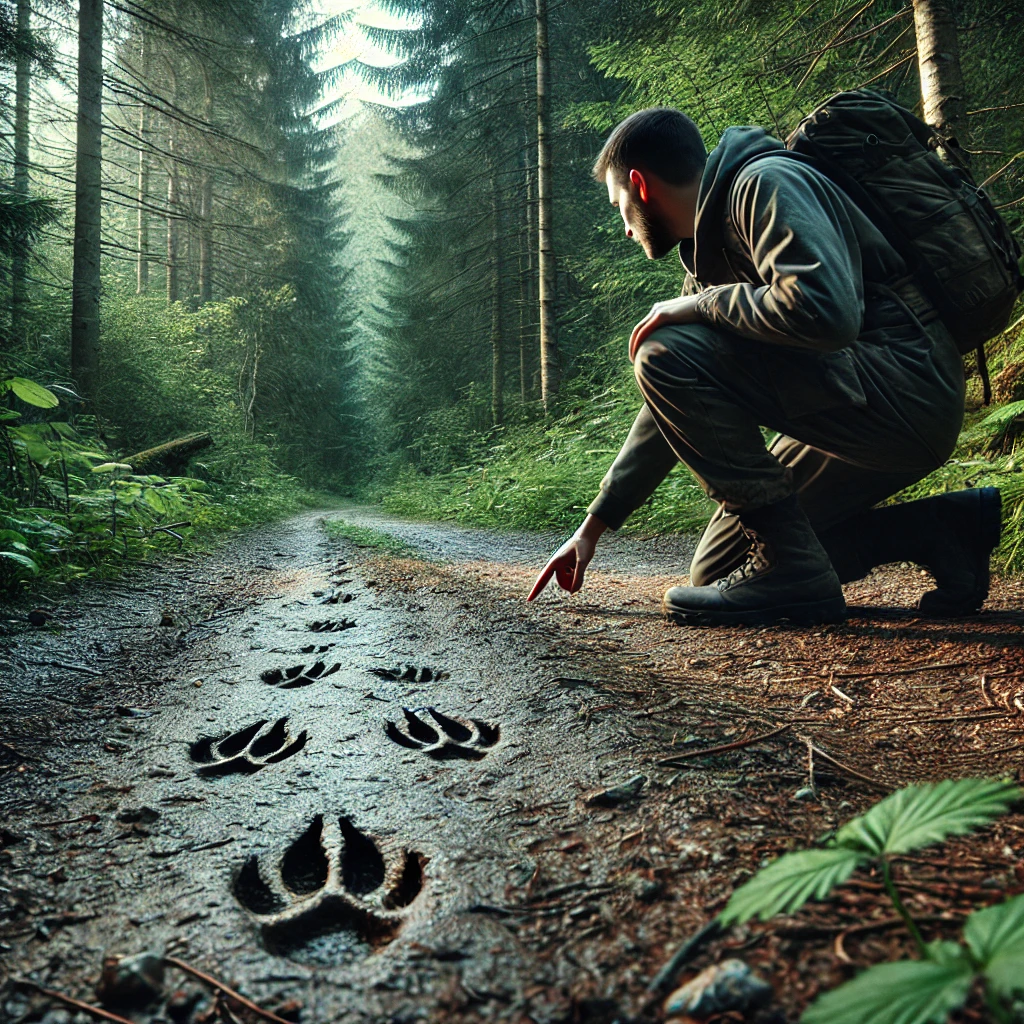Tracking and Avoiding Wild Animals
In the wild, understanding animal behavior and knowing how to track or avoid them can be essential for survival. Whether you are hunting, hiking, or surviving, these skills can keep you safe.
1. Understanding Animal Tracks
Animal tracks give clues about their size, speed, and direction. Here are common prints:
- Deer: Two-pointed, heart-shaped hoof prints.
- Bear: Large, rounded prints with visible claw marks.
- Canines (wolves, coyotes, dogs): Four oval-shaped toes with claw marks.
- Felines (mountain lions, bobcats): Four round toes without claw marks.
- Raccoons: Small hand-like prints, similar to tiny human hands.
2. Identifying Other Animal Signs
Besides tracks, look for these signs:
- Scat (droppings): The size, shape, and contents help identify the animal.
- Claw Marks: Found on trees or soft ground, often made by bears or big cats.
- Feeding Areas: Broken branches, stripped bark, or scattered feathers indicate an animal’s presence.
- Nests & Dens: Holes in the ground, caves, or burrow entrances can be homes for animals.
3. How to Avoid Wild Animals
Encounters with wild animals can be dangerous. Follow these tips to stay safe:
- Make Noise: Most animals avoid humans. Clapping, talking, or carrying a bell can prevent surprising them.
- Stay Alert: Look for fresh tracks and droppings. Avoid areas where animals may be feeding.
- Store Food Properly: Hang food bags from trees or use bear-proof containers.
- Travel in Groups: Larger groups are less likely to be attacked.
4. What to Do If You Encounter a Wild Animal
Different animals require different responses. Here’s how to react:
- Bear: Stay calm. Slowly back away without turning your back. Do not run. Use bear spray if necessary.
- Wolf or Coyote: Stand tall, maintain eye contact, and make yourself look bigger. Do not turn your back.
- Mountain Lion: Make loud noises, wave your arms, and never crouch or run.
- Snake: Step back slowly and avoid sudden movements.
- Moose: Keep a long distance. If it charges, run behind a tree or obstacle.
5. Final Survival Tips
When exploring the wild, always be prepared:
- Carry a whistle or bear spray.
- Avoid walking near water sources at dawn and dusk when animals are most active.
- Use caution when camping near animal trails.
- Learn local wildlife behavior before entering their habitat.
By understanding wildlife tracking and avoidance techniques, you can enjoy nature safely while minimizing risks.
